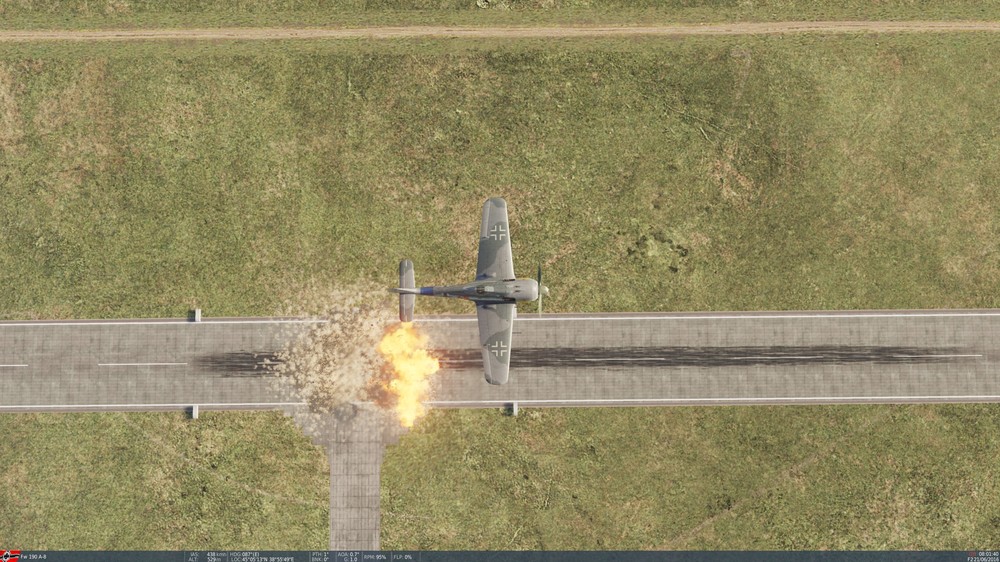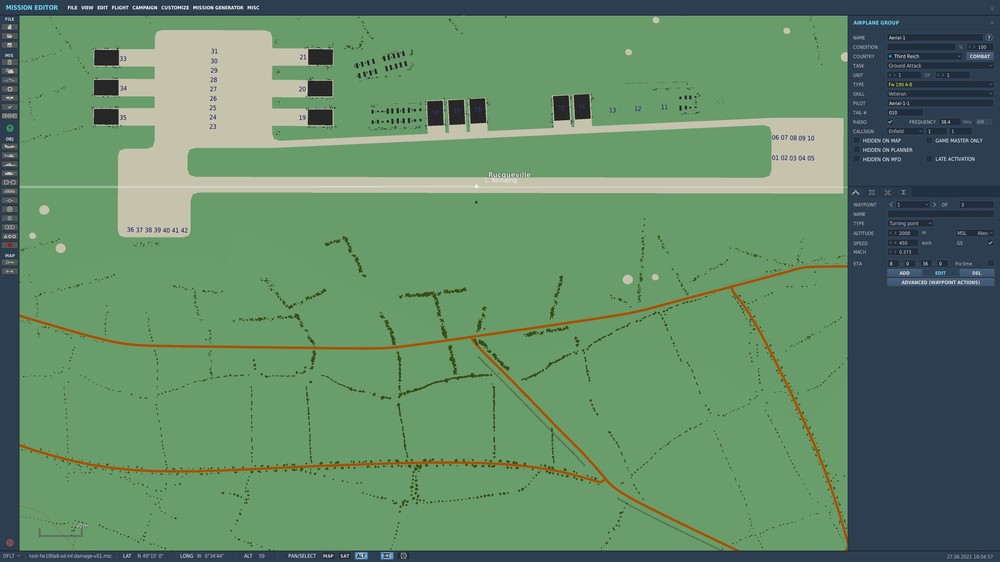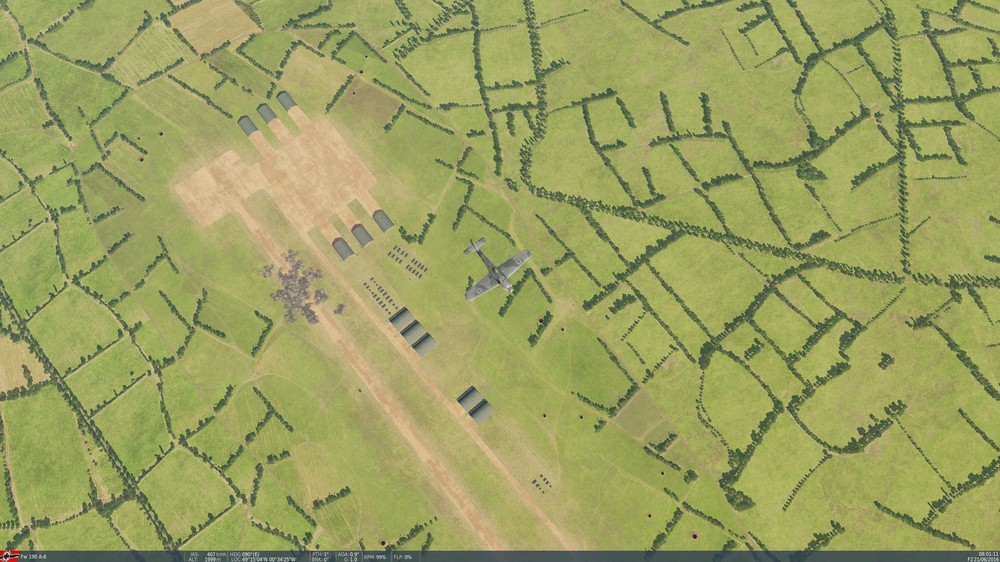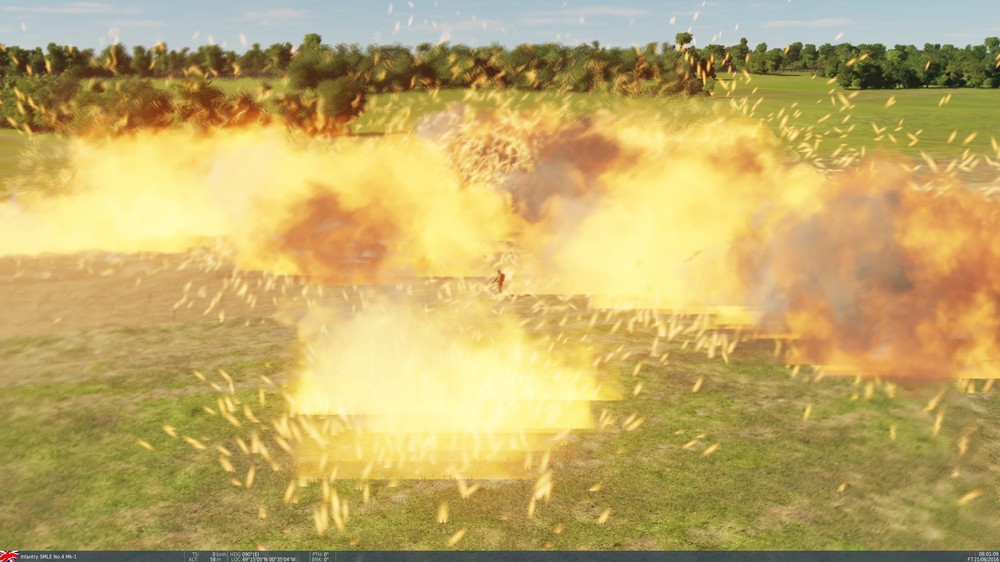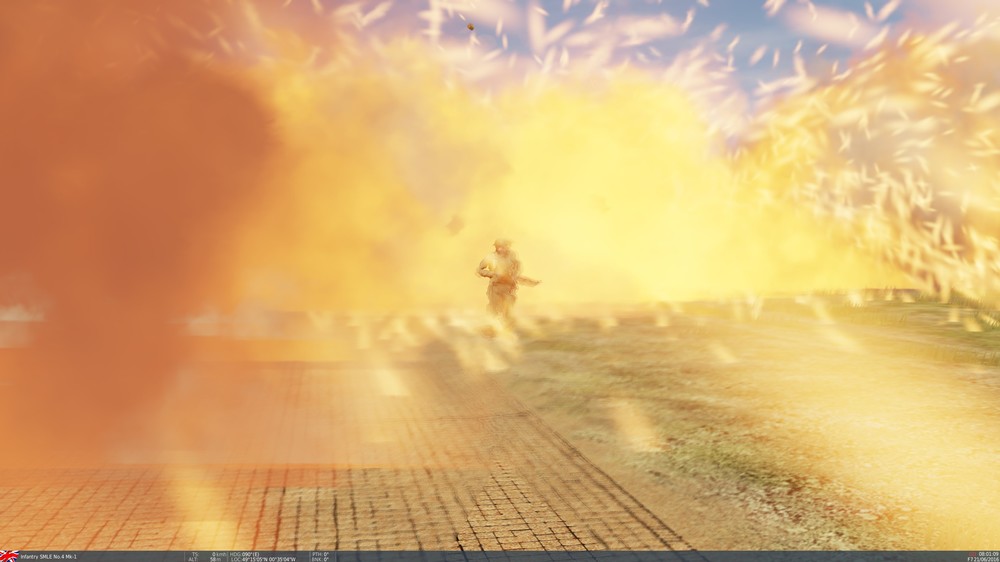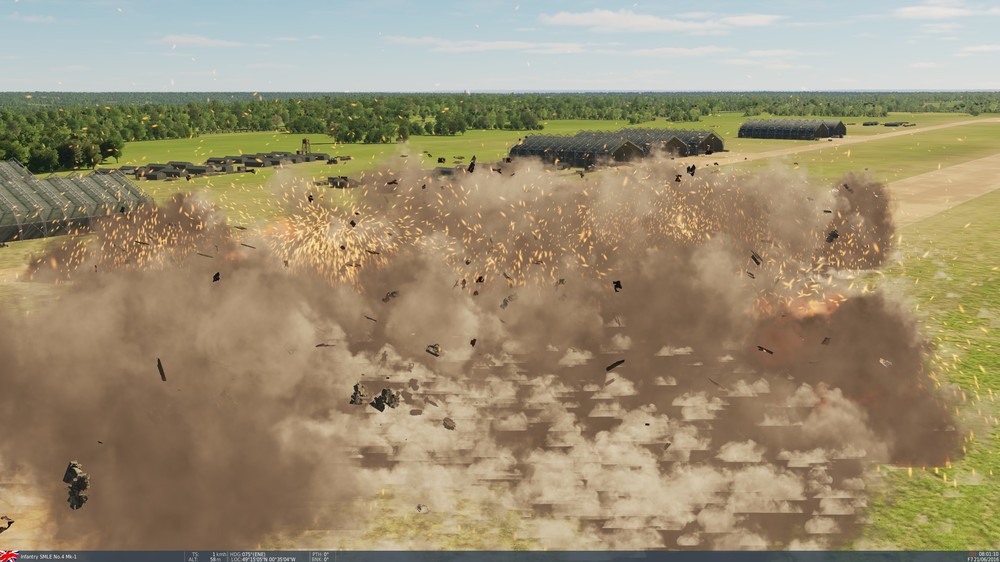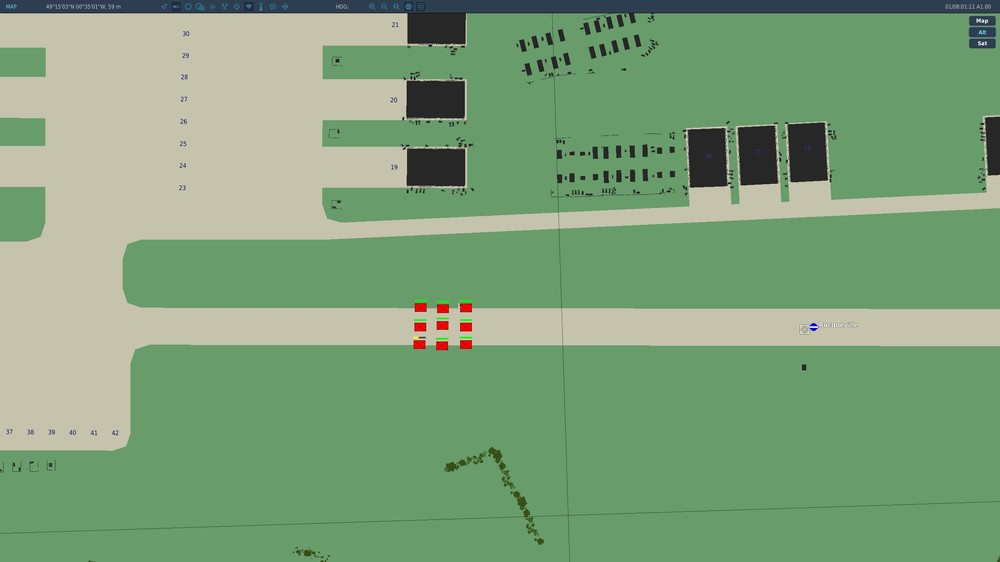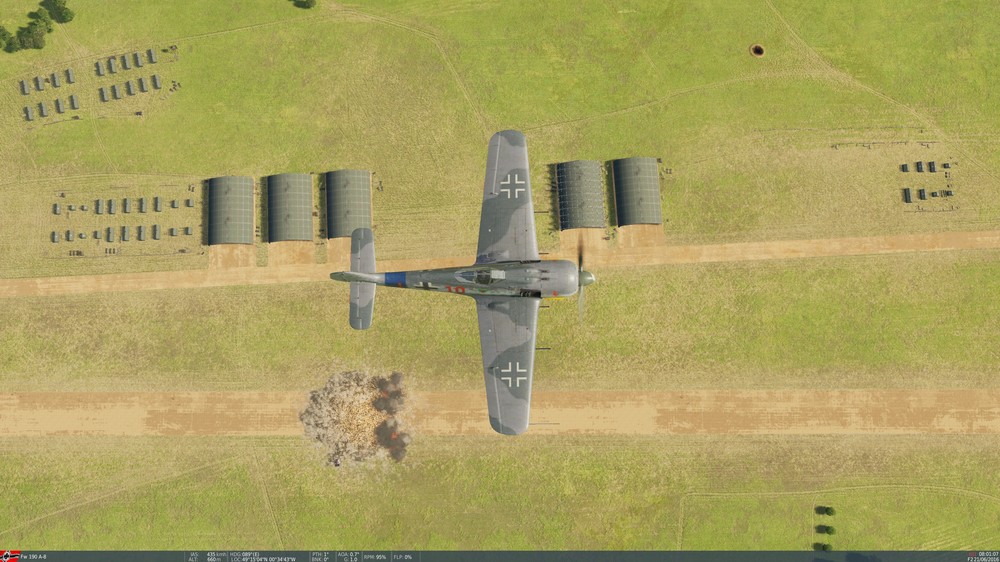-
Posts
796 -
Joined
-
Last visited
-
Days Won
2
Content Type
Profiles
Forums
Events
Everything posted by xvii-Dietrich
-
Hello @BIGNEWY . Over a year ago, you said that this issue had already been open too long. Is there any hope of it getting fixed? Trains are a vital part of the logistics of the Reich. They not only supply the German defences but, as a result, are a critical target for Allied aircraft, such as the P-47D Thunderbolt and the DH.98 Mosquito. It is immensely frustrating that one of the main targets for these aircraft remain dysfunctional after so many years. Once again, like all those who have posted above, we entreat you to raise these important bugs within Eagle Dynamics and pressure not just for them being reported, but acknowledged and then actually fixed.
-
No thanks. I am not interested in the AH-6 / MH-6 whatsoever. However, for those who are, there was already an AH-6 mod brought out a little while back. https://forums.eagle.ru/topic/228394-helicopter-efm-demo/ The person who did the mod is now working for Razbam, so it strikes me that such a project is far more likely to be taken on by Razbam than Polychop.
-
IndiaFoxtEcho are working on recon for their modules. It would be cool if something similar could be brought into the warbirds in the future.
-
WOW!! Those are some stunning photos. I particularly like that one of the nose of the G.91 opened up, showing the cameras themselves. Thanks for taking the time to post them up for us all. I really hope you guys can get something like this working for DCS. This would be a fantastic addition to the sim.
-
Oh, superb!! Sounds excellent! Thanks @TLTeo& @6S.Duke!!
-
In the recent Grim Reapers interview (link : https://www.youtube.com/watch?v=LWYSV5b6K6Y ), IndiaFoxtEcho said they were considering a reconnaissance camera (video ref: 20m35s). If IndiaFoxtEcho could manage it, this would be absolutely amazing (and a first for DCS). I have always been keen on reconnaissance missions and have dreamed of getting some sort of camera or recon capture system into DCS in some way. The following was not for the G.91, but rather just a general suggestion on how to approach the problem. Ref: https://stormofwar.net/2021/02/23/february-2021-player-interview-with-xvii-dietrich/ I wonder what IndiaFoxtEcho are thinking for their implementation, and if it would be feasible? Does anyone know the type of camera/lens that was fitted in the G.91 historically? And I wonder if any real photographs exist from G.91 aircraft? Anyway, I'm very excited by the thought of genuine photo-recon capability in DCS. Best wishes to IndiaFoxtEcho for their project!!
-
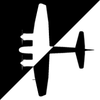
reported Incorrect trajectory of the BR21 rockets?
xvii-Dietrich replied to xvii-Dietrich's topic in Bugs and Problems
This a test that ED could try internally. Set the detonation time to 5.5 seconds and then fly at a constant, low-altitude ( e.g. right at sea-level). If the trajectory is set correctly then, indeed, "the detonation will be just at the cross of the sight." In the tests that we have done, with the current timing, the detonation point is high above the sight-line. See, in particular, the last screenshot in the original bug report. If the trajectory is correct, we should fly through the smoke cloud, not way below it, which is what we currently have. ( As an hypothesis, at sea-level I would expect to fly slightly over the smoke cloud. This is because then increased atmospheric density would correspond to drag and thus would result in the rocket falling further in a given time. ) -
Since posting the original thread, @The_Fraggerhas moved on to doing the texturing for it... so it is not just a wireframe now. He's posted some screenshots of the work in the main progress thread:
-
Something that came up on the Discord this morning. Someone asked about coding work. From what was reported on the RAZBAM discord, this is on hold over the summer due to RL. The coder recently posted:
-

reported SD10 scatter pattern incorrect for Jabo attack
xvii-Dietrich replied to xvii-Dietrich's topic in Bugs and Problems
A test was carried out on the Caucasus map as follows. Setup Four FW 190 A-8s are included. They are set to bomb an intersection on an airport runway. The runway is approx. 60m wide (which is the expected lateral scatter of the submunitions). White shipping containers have been used to indicate the centre line, expected longitudinal distribution (200m) and lateral distribution (60m). Speeds The aircraft are set to different speeds, 550, 500, 450 and 400 km/h. As they approach the target, they adjust their speeds to 510, 486, 459 and 453, respectively. I presume this is the AI adjusting for the bombing run. A .trk file is provided to allow extraction of exact speeds at relevant stages of the attack. Altitudes The runway height is 30m altitude, and the aircraft are set to 530m altitude. This gives a drop altitude (dt. Abwurfhöhe) of 500m. This matches the historical data that I have (please see the reference and attachment in the original post in this thread). Likewise, see the .trk file for exact altitude data. Result In all cases, the distribution pattern is approx. ca.90m long, by ca.60m wide. The width is correct, and matches the historical data. The length is about half of what it should be. The expected historical pattern is ca.200m long by ca.60m wide. The track and a screenshot of a distribution pattern is attached. . server-20210704-045751_ab250-sd10-jabo.trk -

reported Canopy closing action inverted
xvii-Dietrich replied to Arink429's topic in Bugs and Problems
According to when @NineLine posted above, it was reported way back in April. Given that it was already working and then something broke during a patch, means that the work needed here is not introducing a new feature, but fixing a mistake in a patch. Perhaps these things might get missed during regression testing, but surely once alerted to the problem, ED could take a look and rectify these newly introduced problems. At present, the WW2 aircraft are slipping back further and further as new patches come out. I agree with you that the situation is particularly dire at the moment, and that priorities need to change. ED were willing to do that after the Viper release and the "DCS A beautiful mess" video response from the community. So we know they can do it! I truly hope that they can spare a fraction of that effort for DCS WW2. -

reported SD10 bombs do not leave craters or disturbed ground
xvii-Dietrich replied to xvii-Dietrich's topic in Bugs and Problems
The basis of the assertion pertains to the SD10A (not SD10C) munition: 10kg total weight of munition 0.9kg explosive charge 86mm munition diameter 324mm munition length (fins are extra and are ignored in those dimensions) This is the equivalent of a heavy mortar shell (examples: M2, M30, GrW 34). There is sufficient documentation of mortar shells of equivalent calibre leaving cratering on non-hardened surfaces and, in some cases, even road surfaces are disrupted. See references below. In the casing of an AB 250, not one, but 17x SD10 sub-munitions are enclosed. There are even more in the AB 500 casing. Disturbance to grass and dirt is therefore expected, and on hard surfaces scorch marks or other indicators of impact. References https://www.trngcmd.marines.mil/Portals/207/Docs/TBS/MCWP 3-15.2 Tactical Employment of Motars.pdf https://www.globalsecurity.org/military/library/policy/army/fm/6-121/fm612_9.htm https://en.wikipedia.org/wiki/M30_mortar https://www.globalsecurity.org/military/systems/ground/mortars.htm http://www.lonesentry.com/manuals/tme30/ch7sec3.html http://warbirdsresourcegroup.org/LRG/sd10.htm https://www.globalsecurity.org/military/library/policy/army/fm/6-121/fm612_9.htm http://michaelhiske.de/Wehrmacht/Luft/Luft/LDV_4200/SERIE_D/Blatt_05b.HTM -

reported Incorrect trajectory of the BR21 rockets?
xvii-Dietrich replied to xvii-Dietrich's topic in Bugs and Problems
@NineLine@BIGNEWY@Wags @Kate Perederko... is there any chance of these bugs moving from the "Reported" status to the "Fixed" status? We have numerous problems that affect WW2 external ordnance, from bombs to rockets. We have very carefully followed your rules and posted detailed explanations, track files and historical references and data. It can take months to get an issue acknowledged and reported into your system, but then it may languish for years. Please, in these cases, we are not asking for new features or aircraft. Merely that the existing implementations are corrected. These problems sometimes span multiple modules. For example, this particular bug affects both the Dora and the Anton - the later of which was released after this bug was reported. It is difficult to express sufficiently, how much DCS WW2 is suffering as a result of the accumulating problems. It is nice, but at the same time frustrating, to see resources poured into DCS Jets and DCS Helicopters, and yet there is a deficit for DCS WW2. We entreat you to consider addressing some of the long-standing problems. and help us, as your community, sustain this aspect of DCS world. Thank you. -

reported SD10 bombs do not leave craters or disturbed ground
xvii-Dietrich replied to xvii-Dietrich's topic in Bugs and Problems
Cratering and the effect of the munitions is affecting not just the Anton. This is a serious problem affecting the Dora too. And even the Bf 109 Ref: -
Given the state of the FW 190 A-8, it seems highly unlikely that the DH.98 Mosquito will have delayed fuse bombs either. This has been something that used to work for the Luftwaffe aircraft (the Dora had it in the early days), however it was broken/removed. The other Allied aircraft have been desperate for delayed fuses for ages now. Even if ED claims to be "working on it" or that it will be "implemented after EA", I regard this with a high-degree of skepticism. This was precisely the rhetoric that we had for the cluster munitions for the Anton. I think the safe assumption is that if the Mosquito is released (2022? 2023?), that it will no have delayed fuse bombs.
-

reported [REPORTED]AB-250 SD-2 "wings" disappear during fall
xvii-Dietrich replied to xvii-Dietrich's topic in Bugs and Problems
The thing is that this originally worked. When the Anton came out in 2019, these were functioning correctly. The patch in early 2020 (yes, 2020) broke them. While some things may have never been implemented in the first place (e.g. the F-8 variant), the things that get broken during a patch should be easier to fix right. Assuming the genre has not been abandoned, that is. And while it is not possible to address all bugs, the fact that no bugs are being addressed does not give a good impression, nor does it give the community any confidence for future modules (such as the Mosquito). -

reported Incorrect trajectory of the BR21 rockets?
xvii-Dietrich replied to xvii-Dietrich's topic in Bugs and Problems
The bug report was made over 3 years ago. -
AI-dropped AB250 w/ SD2 munitions fail to hit the designated target Note that this is for ME-selected, AI-dropped attacks. This is not a question of player skill, but the use of the automated, AI aircraft. It applies even on days with good visibility and calm (no wind) conditions. In tested cases, the bombs fall short of the target. It seems to be more pronounced at higher altitudes. This suggests that the bomb trajectory calculations are incorrect. It may be related to the winglet bug (see May 2020 bug report, LINK ) To test this, an AI aircraft was set to bomb a point on the runway at the position of the controller hut. This bombing position is shown in the mission editor screenshot. A second in-game screenshot is shown showing the position of where the munitions actually landed. As can be seen in the screenshot, the entire bomb scatter falls well short. This accuracy problem does not apply to any of the regular bombs (e.g. SC250, SD500, etc.) that I tested. They all hit more-or-less on target. Track file attached. The tests were done on DCS Open Beta version 2.7.2.8165. server-20210627-180609-ai-sd2-miss.trk
- 5 replies
-
- 15
-

-

-
The blast effect (as in the special effects / graphical animation) when the SD2 bombs land is too dramatic. Note: this is the special effect, not the damage (in fact, the bombs do no damage... but that is a separate bug report : LINK). To test this, drop the munitions on any area where there are nearby trees, buildings, vehicles to reference. Each SD2 bomb weighs 1.9kg and contains a 0.2kg of explosives (Historical ref: Zeichn.-Nr.113-4121, SD 2 B, Serie D, Blatt 3, Juli 1944). The blast effect is about the correct size... ... However, the effect is to blow chunks of ground, concrete, etc. over 40 metres into the air and create a think dense smoke. This is not commensurate with the historical records. See attached screenshot. Note the chunks of material, density of smoke and the size of the hangers and other nearby buildings for reference. Also attached is a track file. Tested using version DCS 2.7.2.8165 Open Beta server-20210627-sd2-overdone-spfx.trk
- 6 replies
-
- 14
-

-

-
The AB250 w/SD2 cluster munition does no damage. The AB250 contains 144 SD2 bombs. Each SD2 bomb weighs 1.9kg with a 0.2kg explosive charge. This is thus a total submunition mass of 275kg (ignoring the casing) and explosive charge mass of 29kg. The SD-designation (dt. Sprengbombe Dickwandig) indicate a fragmentation blast effect. A single SD2 should be lethal to approx. 10m radius and cause injury to 50m radius. However, dropping an entire canister of 144 x SD2 munitions on a small area (which is also incorrect, that's a separate report), results in no injury whatsoever, let alone death. Additionally, this is on unprotected, standing infantry, in open ground (I'm not talking about trucks or aircraft or any "harder" targets like that). Testing To test this, a platoon of 9 x infantry was placed in a 30 x 30m grid. An AI FW 190 A8 dropped an AB250 w/SD2 on the group. The F10 map (with status bars) was used to check on any impact or injury. I repeated the test five times. Typically no damage whatsoever was done (despite the massive visual explosions). There was one single occasion one infantry indicated slight damage (the green bar dropped to yellow). In all other cases there was no indication of any hit or damage whatsoever. Accompanying material Screenshots attached. Note the F10 map version. This was the only injury I could get out of five tests, with direct hits each time. Track file attached. Reference: Zeichn.-Nr.113-4121, SD 2 B, Serie D, Blatt 3 (Juli 1944). server-20210627-182055-sd2-no-damage.trk
- 10 replies
-
- 23
-

-

-

reported earlier Incorrect fuse action on SD2 bomb
xvii-Dietrich posted a topic in Bugs and Problems
The SD2 was fitted with one of three fuse types. Either an air-burst fuse or a mix of timed and disturbance fuses. These last two fuses were often used in the same dispenser resulting in a mix of types being deployed from a single drop. Whether the air fuse, or the two ground fuses, the detonation SD2 submution in DCS are incorrect. At present, the DCS version detonates on landing, which is incorrect. Assuming the mixed ground fuse types, then there should be some which detonate after extended periods of time or on disturbance. Track file attached. References Zeichn.-Nr. 113-4121, SD 2 B , Serie D, Blatt 3, (Juli 1944) L.Dv. 152/ Zünder für Abwurfmunition, LZtZ (67), Anhang Serie I, Blatt 28 (März 1943) L.Dv. 4200 Zünder für Abwurfmunition, Anhang, Serie I, Blatt 30, (Juli 1944) server-20210626-154540-sd2-fuses.trk- 8 replies
-
- 22
-

-

-
The AB250 and AB500 w/SD10 cluster munitions have an incorrect dispense trajectory from high altitude. This is a separate issue to the Jabo attack dispersion pattern (reported separately). It may be related to the incorrect dispense release trigger or to the trajectory of the SD10 bombs themselves. Regardless, the pattern when dropped from up to 6000m should be 90-160m long and 50-120m wide. In DCS, the width of the pattern is approximately correct. However, the length is too short. This results in a pattern that is wider than it is long (which is incorrect). A screenshot has been attached which shows this effect. The FW 190 A8 was flying from west to east along the length of the runway. As can be see, the pattern of exploding SD10s is wide, but has nearly no longitudinal dispersion. The track of that example is also attached. Tested using version DCS 2.7.2.8165.2 Open Beta References - Zeichen-Nr. 113-4626.160, AB 250-2, 17 SD 10 A, Serie P Blatt 3a (Juli 1944) - Zeichen-Nr. 113-4651.158, AB 500-1, 37 SD 10 A, Serie P, Blatt 4c, (Juli 1944) server-20210626-005442-ab-high.trk
- 5 replies
-
- 22
-

-

-
SD10 bombs do not leave any crater, nor disturb the ground in any way. This is independent of the altitude from which they are dropped. It is independent of whether the fuse is mV or oV (although for this munition type it should always be mV). It is also indepedent as to whether the bombs were dropped from AI or a human player. Craters (or at least some for of disturbed ground) are especially important for this munition type, as it was specifically a disruption munition. Track attached. Tested using version DCS 2.7.2.8165.2 Open Beta server-ab-no-cratering.trk
- 10 replies
-
- 18
-

-

-

reported SD10 scatter pattern incorrect for Jabo attack
xvii-Dietrich posted a topic in Bugs and Problems
[[ Had to re-edit this. The forums destroyed the text of the original. ]] The distribution pattern (scatter of the sub-munitions on the ground) is incorrect for the AB250 SD10. Instead of an elongated 200x60m pattern, the bomblets fall in a 45m dia circle. Track file attached. References - Zeichen-Nr. 113-4626.160, AB 250-2, 17 SD 10 A, Serie P Blatt 3a (Juli 1944) - Blatt AB 250-2 144 SD 2 Zt Serie P Blatt 6 (Mai 1943) - Zeichen-Nr. 113-4651.158, AB 500-1, 37 SD 10 A, Serie P, Blatt 4c, (Juli 1944) Tested using version DCS 2.7.2.8165.2 Open Beta server-20210626-003404_ab250-sd10-pattern.trk- 8 replies
-
- 18
-

-




